Related Research Articles

Ejnar Hertzsprung was a Danish chemist and astronomer born in Copenhagen. In the period 1911–1913, together with Henry Norris Russell, he developed the Hertzsprung–Russell diagram.

Giovanni Virginio Schiaparelli was an Italian astronomer and science historian.
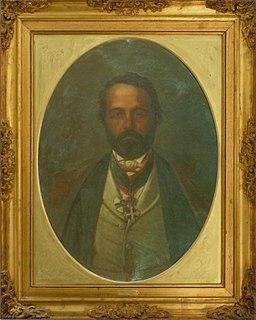
Annibale de Gasparis was an Italian astronomer, known for discovering asteroids and his contributions to theoretical astronomy.

David John Stevenson is a professor of planetary science at Caltech. Originally from New Zealand, he received his Ph.D. from Cornell University in physics, where he proposed a model for the interior of Jupiter. He is well known for applying fluid mechanics and magnetohydrodynamics to understand the internal structure and evolution of planets and moons.

Ernst Wilhelm Leberecht Tempel, normally known as Wilhelm Tempel, was a German astronomer who worked in Marseille until the outbreak of the Franco-Prussian War in 1870, then later moved to Italy.
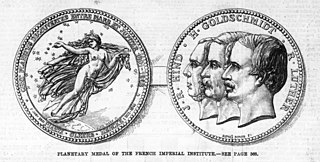
Karl Theodor Robert Luther, normally published as Robert Luther, was a German astronomer. While working at the Bilk Observatory in Düsseldorf, Germany, he searched for asteroids and discovered 24 of them between 1852 and 1890. Seven times Lalande Prize winner.
Jean Chacornac was a French astronomer and discoverer of a comet and several asteroids.
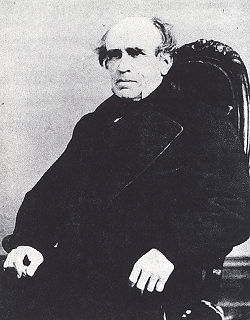
James Ferguson was a Scottish-born American astronomer and engineer, who made the first discovery of an asteroid from North America.

Johann Palisa was an Austrian astronomer, born in Troppau, Austrian Silesia, now Czech Republic. He was a prolific discoverer of asteroids, discovering 122 in all, from 136 Austria in 1874 to 1073 Gellivara in 1923. Some of his notable discoveries include 153 Hilda, 216 Kleopatra, 243 Ida, 253 Mathilde, 324 Bamberga, and the near-Earth asteroid 719 Albert. Palisa made his discoveries without the aid of photography, and he remains the most successful visual (non-photographic) asteroid discoverer of all time. He was awarded the Valz Prize from the French Academy of Sciences in 1906. The asteroid 914 Palisana, discovered by Max Wolf in 1919, and the lunar crater Palisa were named in his honour.
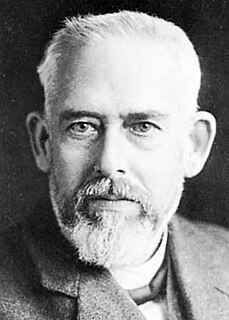
Maximilian Franz Joseph Cornelius Wolf was a German astronomer and a pioneer in the field of astrophotography. He was the chairman of astronomy at the University of Heidelberg and director of the Heidelberg-Königstuhl State Observatory from 1902 until his death in 1932.
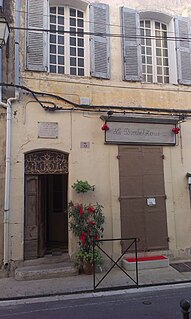
Auguste Honoré Charlois was a French astronomer who discovered 99 asteroids while working at the Nice Observatory in southeastern France.
Philibert Jacques Melotte was a British astronomer whose parents emigrated from Belgium.
Sylvain Julien Victor Arend was a Belgian astronomer born in Robelmont, Luxembourg province, Belgium. His main interest was astrometry.
Joel Hastings Metcalf was an American astronomer, humanitarian and minister.
Henri Debehogne was a Belgian astronomer and a prolific discoverer of minor planets.
Kōyō Kawanishi is a Japanese dentist, amateur astronomer and discoverer of 13 minor planets.
Alfred Schmitt was a French astronomer. Schmitt worked at Algiers Observatory in the 1930s and 1940s and at the Royal Observatory in Uccle, Belgium in the 1950s. From 1955 to 1958 he was also director of the Quito Observatory in Ecuador. He extensively studied minor planets and comets and is credited with having discovered four asteroids.
William Hammond Wright was an American astronomer and the director of the Lick Observatory from 1935 until 1942.

Ian P. Griffin is a British astronomer, discoverer of minor planets and a public spokesman upon scientific matters. He is currently the Director of Otago Museum, Dunedin, New Zealand. Griffin was the CEO of Science Oxford, in Oxford, United Kingdom, and the former head of public outreach at NASA's Space Telescope Science Institute.
Joseph Rheden was an Austrian astronomer, born in Amlach, East Tyrol, known for his astrographic observations of planets, minor planets and comets, and for the asteroids 744 Aguntina, 771 Libera, and 844 Leontina, which he discovered in 1913 and 1916, respectively.
References
- ↑ "Birthdays", The Guardian , p. 35, 17 March 2014
- ↑ "Annual Report: Awards & Prizes". University of Cambridge. Archived from the original on 5 January 2006. Retrieved 7 February 2009.
- ↑ (3205) Boksenberg In: Dictionary of Minor Planet Names. Springer. 2003. doi:10.1007/978-3-540-29925-7_3206. ISBN 978-3-540-29925-7.